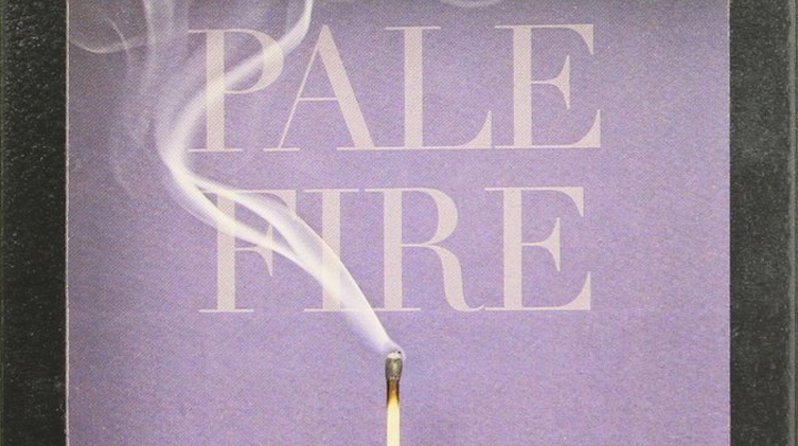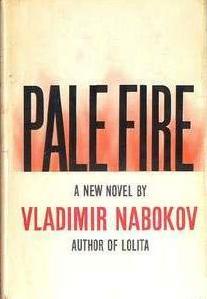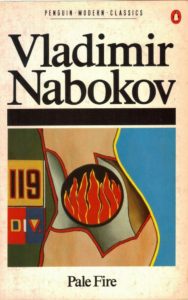

I was the shadow of the waxwing slain
By the false azure in the windowpane
*
“Pale Fire is a Jack-in-the-box, a Faberge gem, a clockwork toy, a chess problem, an infernal machine, a trap to catch reviewers, a cat-and-mouse game, a do-it-yourself novel. It consists of a 999-line poem of four cantos in heroic couplets together with an editor’s preface, notes, index, and proof-corrections. When the separate parts are assembled, according to the manufacturer’s directions, and fitted together with the help of clues and cross-references, which must be hunted down as in a paper-chase, a novel on several levels is revealed, and these ‘levels’ are not the customary ‘levels of meaning’ of modernist criticism but planes in a fictive space, rather like those houses of memory in medieval mnemonic science, where words, facts, and numbers were stored till wanted in various rooms and attics, or like the Houses of astrology into which the heavens are divided.
…

“The real, real story, the plane of ordinary sanity and common sense, the reader’s presumed plane, cannot be accepted as final. The explanation that Botkin is mad will totally satisfy only Professors H. and C. and their consorts, who can put aside Pale Fire as a detective story, with the reader racing the author to the solution. Pale Fire is not a detective story, though it includes one. Each plane or level in its shadow box proves to be a false bottom; there is an infinite perspective regression, for the book is a book of mirrors.
…

“Nabokov’s tenderness for human eccentricity, for the freak, the ‘deviate,’ is partly the naturalist’s taste for the curious. But his fond, wry compassion for the lone black piece on the board goes deeper than classificatory science or the collector’s choplicking. Love is the burden of Pale Fire, love and loss. Love is felt as a kind of homesickness, that yearning for union described by Plato, the pining for the other half of a once-whole body, the straining of the soul’s black horse to unite with the white. The sense of loss in love, of separation (the room beyond, projected onto the snow, the phantom moves of the chess knight, that deviate piece, off the board’s edge onto ghostly squares), binds mortal men in a common pattern—the elderly couple watching TV in a lighted room, and the ‘queer’ neighbor watching them from his window. But it is most poignant in the outsider: the homely daughter stood up by her date, the refugee, the “queen,” the bird smashed on the window pane.
…

“I have not been able to find, in Shakespeare or anywhere else, the source of ‘pale fire.’ In the commentary there is an account of the poet burning his rejected drafts in ‘the pale fire of the incinerator.’ An amusing sidelight on the question may be provided by the word ingle, used by Kinbote to mean a catamite or boy favorite, but which also means blaze, from the Gaelic word for fire. A Helena Rubinstein product is called Pale Fire. I think too of the pale fire of opals and of Wordsworth, one of the patron saints of the grotesquely named Wordsmith College: ‘Life like a dome of many-colored glass / Stains the pale radiance of eternity.’ Whether the visible world is a prismatic reflection of eternity or vice versa is perhaps immaterial, like the question of which came first, the chicken or the egg. In the game of signaling back and forth with mirrors, which may be man’s relation with the cosmos, there is perhaps no before or after, only distance—separation—and, across it, the agitated flashing of the ART semaphore.
In any case, this centaur-work of Nabokov’s, half poem, half prose, this merman of the deep, is a creation of perfect beauty, symmetry, strangeness, originality, and moral truth. Pretending to be a curio, it cannot disguise the fact that it is one of the very great works of art of this century, the modern novel that everyone thought dead and that was only playing possum.”
–Mary McCarthy, The New Republic, June 4, 1962

